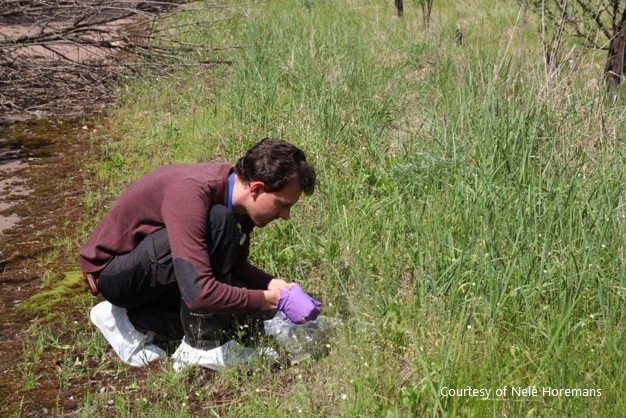Effects of long-term exposure to ionizing radiation on Brassicaceae in the CEZ (and Fukushima)
In order to study the long-term impact (within and across generations) of gamma radiation in plants a field study was conducted in the CEZ during May 2016. Arabidopsis thaliana (an annual Brassicaceae) was sampled along a gradient of radiation ranging from 0.5 to 50 µGy h-1 (ambient dose rates). In total 15 sites were sampled and these could be divided into low (<3 µGy h-1), medium (3-10 µGy h-1) and high radiation (15-80 µGy h-1) sites. For comparison, the annual Brassicaceae plant, Capsella bursa pastoris was sampled using a similar protocol from the Fukushima exclusion zone in Japan.
As an initial indication of radiation levels across the sites the average dose rates at the level of the plants was measured using a handheld meter. In order to make a more realistic estimate of dose, samples of soil and above ground plant material was collected (at least three samples per site). These samples were dried prior to being measured to determine the activity concentrations of important radionuclides (Cs-137, Sr-90, Am-241, Pu-isotopes).
For genetic comparison of the plants and analysis of whole genome methylation levels and DNA damage, rosette leaves were harvested from flowering plants and frozen in liquid nitrogen as soon as possible (in the field). The reproductive stage was chosen to enable easy identification of plants in the field. In addition to leaf material, seeds were collected 14 days later. The seeds used to test for differences in germination rate, root growth and flower induction under laboratory conditions. Seeds from these plants were then grown for a further generation; results from this study will allow comparison of induction of steady transgenerational changes in the plants.
 | Sampling Arabidopsis thaliana in the CEZ |
